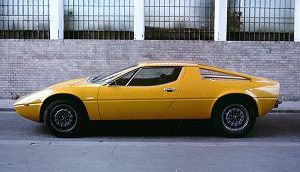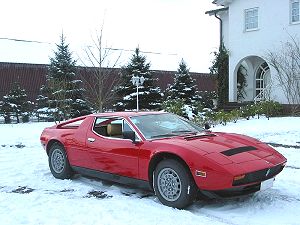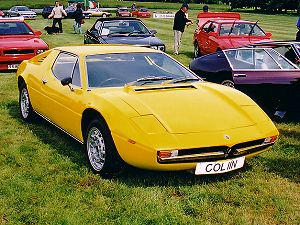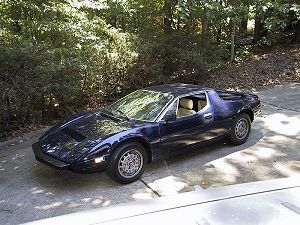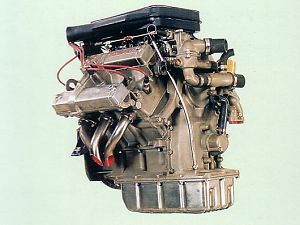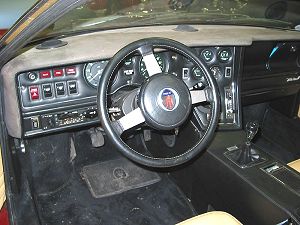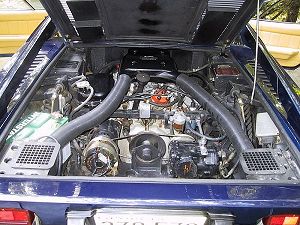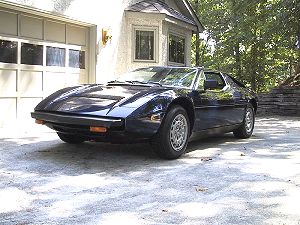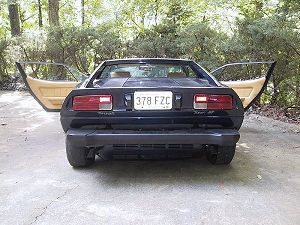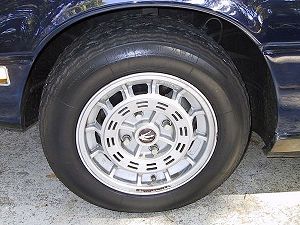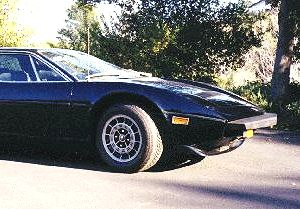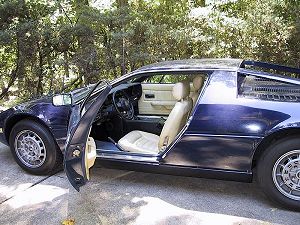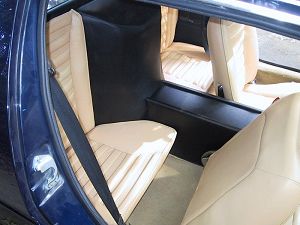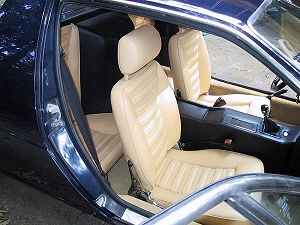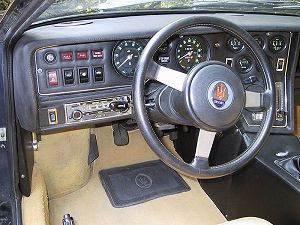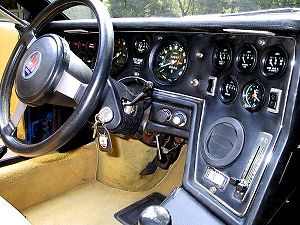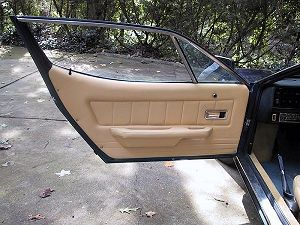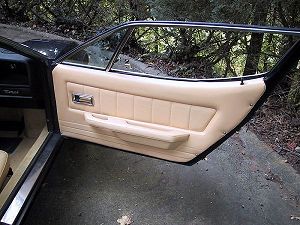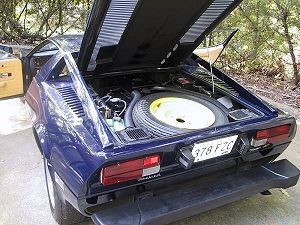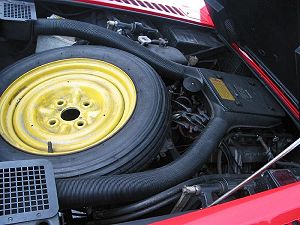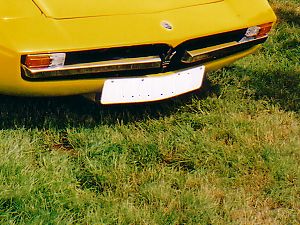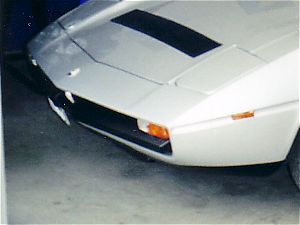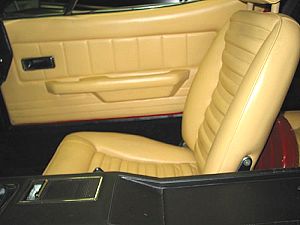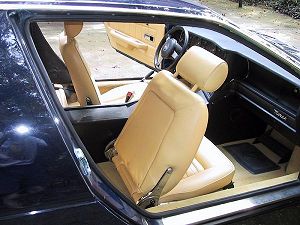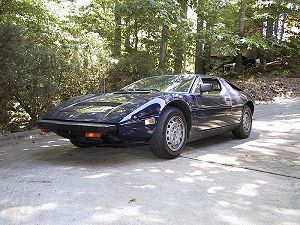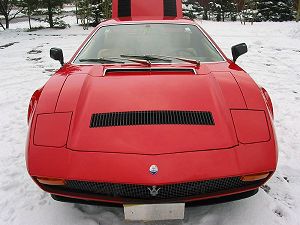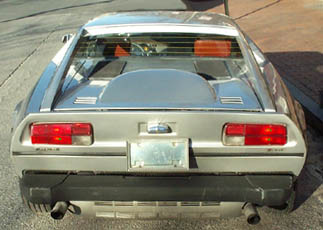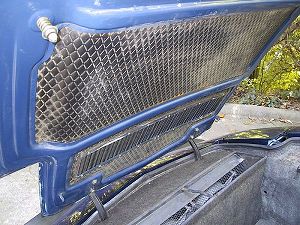| The Merak
"... from an Adriatic wind a star is born." |
 |
||
|
Dr. George Lipperts and Ivan Ruiz. |
|||
|
The Maserati Bora had been launched in 1971 and represented the typical Maserati GT concept, with its big classic 4.7-litre V8 and the beautiful line sculptored by Giorgetto Giugiaro. |
|||
|
The Merak adopted a major part of its chassis and bodywork from the Bora, especially in the frontal area. |
|||
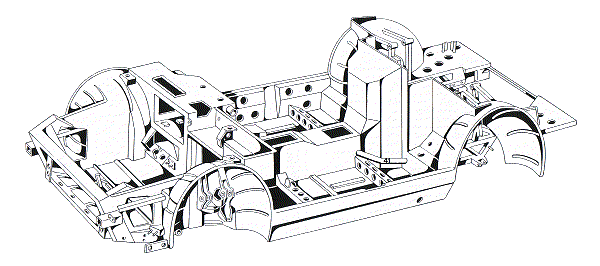 The monocoque steel chassis of the Merak with flexibly anchored engine subframe. |
In order to reduce costs, the tubular chassis of the Bora, with its costly rear subframe, was replaced by an all-steel monocoque with a more simplified rear subframe due to the smaller lighter V6 engine. |
|||
The body of the Merak designed by Giugiaro is practically identical to the Bora from the nose to the doors. The only differences being to the front panels reduced to accomodate the shape of the bumper, the chrome trimmed grilles being replaced by a two chromium plated bumpers either side of the traditional trident. The Bora's distictive protective rubber strip along the belt-line was replaced with a single character line. The single retractable headlights remained unchanged. |
|||
The Merak, designated Tipo 122 by the factory, was officially launched at the Paris Motor Show in October 1972. |
|||
|
|||
Naturally the modifications made to the Merak were not just to the engine and mechanics. In fact the first 3-litre models were fitted with the same dashboard and single-spoked steering wheel as the Citroën SM. The Citroën fascia panel was soon replaced with a more standard square shaped instrument panel, designed by Maserati, with a classic four-spoked steering wheel. Later models were fitted with the same dashboard as the Bora. |
|||
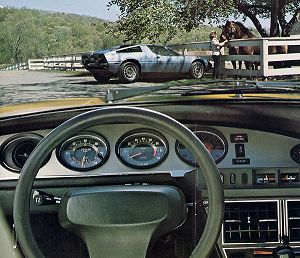 |
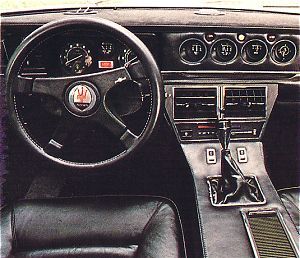 |
The early Merak's Citroën fascia panel and the later 'square-shaped' instrument binnacle in the dashboard of the Merak and Merak SS. (from factory brochures) |
|
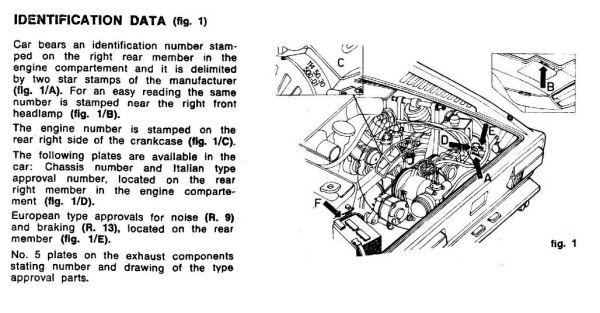 Location of Maserati Merak Identification Numbers. |
>In its production run from 1972 to 1983 some 1830 Meraks were built, of which 1000 were Merak SSs and 200 were 2000 GTs; the most productive year being 1973. |
|||
The Merak, like the Bora, suffered greatly at first from the fall-out of the energy crisis, and above all later from the managerial difficulties at Maserati. Because at that time the 'Casa del Tridente' was making the difficult transition from the old owners CitroŽn to that of new owner, Alejandro De Tomaso. |
|||
| TECHNICAL DATA - TIPO 122 | |
| Body type | 2-door 2+2-seater Granturismo |
| Production years | From 1971 to 1983 |
| Engine | Mid-engined V6-cyl @ 90° |
| Bore and stroke | 91.6 mm X 75 mm (80 x 66.3 mm) |
| Engine capacity | 2965 cc (1999 cc) |
| Compression ratio | 8.75:1/ SS 9.0:1 (9.0:1) |
| Maximum power | 190-bhp @ 6000 rpm/ SS 220 bhp @ 6500 rpm (170 bhp @ 7000 rpm) |
| Distribution | Four overhead camshafts, two valves per cylinder |
| Induction system | No 3 Twin-choke Weber 42DCNF (44DCNF)downdraught carburettors |
| Ignition | Electronic ignition |
| Lubrification | Forced with pressure pump |
| Transmission | Rear wheel drive |
| Differential | Citroën/ ZF transaxle |
| Clutch | Hydraulic single dry plate |
| Gearbox | 5-speed and reverse transaxle |
| Chassis | Monocoque structure with flexibly mounted rear subframe |
| Front suspension:- | Independent wheels, coil-springs and telescopic shock-absorbers and anti-roll bar |
| Rear suspension:- | Independent wheels, coil-springs and telescopic shock-absorbers and anti-roll bar |
| Brakes | Hydraulically operated ventilated disc brakes on all four wheels |
| Wheelbase | 2600 mm |
| Wheel tracks | Front 1474 mm Rear 1470 mm |
| Tyres | Front:- 205/70 x 15 (195/70 x 15) Rear:- 205/70 x 15 (215/70 x 15) |
| Dry weight | 1451 kg |
| Overall length | 4330 mm |
| Overall width | 1768 mm |
| Overall height | 1134 mm |
| Maximum speed | 204 to 245 kph |
| Models constructed | 1830 |
| These Bora brochure courtesy of Henry Peder. | |
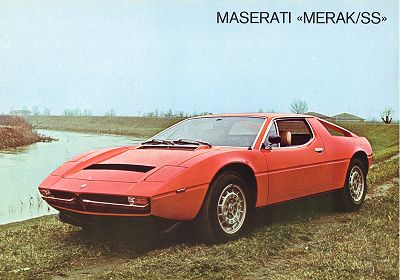 |
|
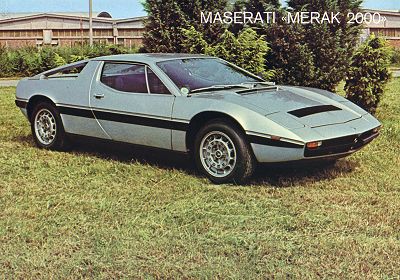 |
|
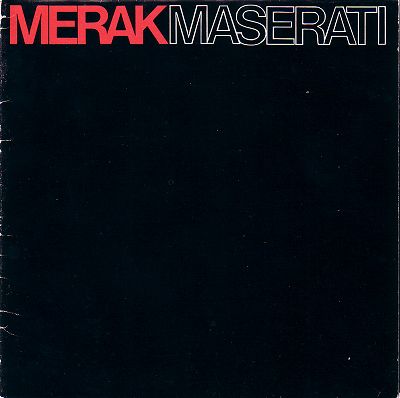 |
|
 |
|
To enter Enrico's Maserati Pages CLICK HERE! Copyright: Enrico's Maserati Pages - © 2003-2004. All rights reserved. |
